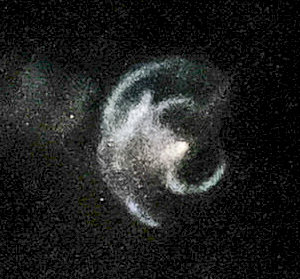Orbital ATK gets its second contract for its satellite repair robot
Capitalism in space: Orbital ATK has signed a second contract to build another Mission Extension Vehicle (MEV), designed to robotically extend the life of old but usable satellites.
The vehicle was ordered by Intelsat S.A. to provide life extension services for an Intelsat satellite. Orbital ATK is now producing MEV-1, the industry’s first commercial in-space satellite servicing system, for Intelsat with launch scheduled for late 2018. Under this new agreement, Orbital ATK will manufacture, test and launch MEV-2 and begin mission extension services in mid-2020. The production of the second MEV is part of Orbital ATK’s longer-range plan to establish a fleet of in-orbit servicing vehicles that can address diverse space logistics needs including repair, assembly, refueling and in-space transportation.
“Work on MEV-1 is progressing rapidly toward a late 2018 launch with system-level testing beginning this spring,” said Tom Wilson, President of Orbital ATK’s Space Logistics, LLC subsidiary. “With the launch of MEV-2, Orbital ATK will continue to pioneer in-space satellite servicing for commercial operators. Intelsat’s commitment to a second MEV demonstrates not only the market demand for our servicing vehicles, but also the customer’s confidence in our product.”
Through its Space Logistics subsidiary, Orbital ATK will introduce in-orbit commercial satellite servicing with MEV-1 late this year. The MEV is based on the company’s GEOStarTM spacecraft platform, and controlled by the company’s satellite operations team. The MEV uses a reliable, low-risk docking system that attaches to existing features on a customer’s satellite, and provides life-extending services by taking over the orbit maintenance and attitude control functions of the client’s spacecraft. Each MEV vehicle has a 15 year design life with the ability to perform numerous dockings and repositionings during its life span.
What Orbital ATK here is doing is creating a entirely new cottage industry with the satellite industry, providing satellite companies an inexpensive way to maintain their satellite networks without building and launching a whole new communications satellite. Once Orbital has placed a number of these in orbit, they will be available to move from satellite to satellite. Once their first repair job is finally finished, they will then move on to another at relatively little cost.
Capitalism in space: Orbital ATK has signed a second contract to build another Mission Extension Vehicle (MEV), designed to robotically extend the life of old but usable satellites.
The vehicle was ordered by Intelsat S.A. to provide life extension services for an Intelsat satellite. Orbital ATK is now producing MEV-1, the industry’s first commercial in-space satellite servicing system, for Intelsat with launch scheduled for late 2018. Under this new agreement, Orbital ATK will manufacture, test and launch MEV-2 and begin mission extension services in mid-2020. The production of the second MEV is part of Orbital ATK’s longer-range plan to establish a fleet of in-orbit servicing vehicles that can address diverse space logistics needs including repair, assembly, refueling and in-space transportation.
“Work on MEV-1 is progressing rapidly toward a late 2018 launch with system-level testing beginning this spring,” said Tom Wilson, President of Orbital ATK’s Space Logistics, LLC subsidiary. “With the launch of MEV-2, Orbital ATK will continue to pioneer in-space satellite servicing for commercial operators. Intelsat’s commitment to a second MEV demonstrates not only the market demand for our servicing vehicles, but also the customer’s confidence in our product.”
Through its Space Logistics subsidiary, Orbital ATK will introduce in-orbit commercial satellite servicing with MEV-1 late this year. The MEV is based on the company’s GEOStarTM spacecraft platform, and controlled by the company’s satellite operations team. The MEV uses a reliable, low-risk docking system that attaches to existing features on a customer’s satellite, and provides life-extending services by taking over the orbit maintenance and attitude control functions of the client’s spacecraft. Each MEV vehicle has a 15 year design life with the ability to perform numerous dockings and repositionings during its life span.
What Orbital ATK here is doing is creating a entirely new cottage industry with the satellite industry, providing satellite companies an inexpensive way to maintain their satellite networks without building and launching a whole new communications satellite. Once Orbital has placed a number of these in orbit, they will be available to move from satellite to satellite. Once their first repair job is finally finished, they will then move on to another at relatively little cost.


